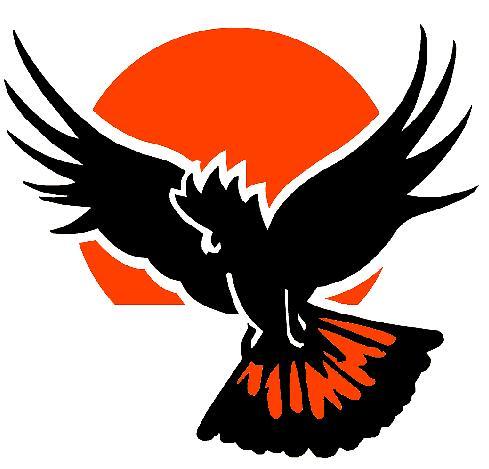Help our Red-tails
Fence off existing stands of Stringybark and Buloke and scattered paddock trees on your property, to protect from stock damage and to allow for natural regeneration.
Incentives for nests
Incentive payments are again being offered to landholders and members of the public for the discovery of new nests sites as part of the Red-tail Nest Incentive Scheme.
Join the count
Although we can’t guarantee you’ll see a Red-tail on the day, we’re sure you’ll enjoy a fun day out in the bush searching for our colourful cockatoos.
Welcome
Flock Counts 2013
Since early May, Tim Burnard has been kept very busy roaming the Red-tail range to underake this year's flock counts. Read on to find out the results...

Male tail feather (left) and female/juvenile barred-tail feather (right).
One of the important bits of information we get from the Annual Count is the location of the larger flocks around the range so we can record the ratio of the males to the bar-tailed birds (this includes females and all juveniles). This is what we call the Flock Counts.
From the Flock Counts we can reasonably estimate the breeding success for a given year. Eg if there are 50 male birds and 60 bar-tailed birds that means we have about 10 juveniles (most species maintain a roughly 50:50 male/female ratio). The ratio in this example would be 45%.
A lower percentage of males indicates a higher number of juveniles, which means a better breeding outcome in the last year.
We do the Flock Counts at watering sites because it’s easier to pick the difference between males and bar-tailed birds as they land to drink with tail spread. This is the only time our Red-tails come to the ground (northern sub-species often feed on the ground). We can also be pretty sure that they will come in at an allotted time as they tend to drink just before dusk.
It all sounds pretty straight forward but it can be very time consuming and often frustrating.
The Annual Count found four good sized mobs of Red-tails and we started with the flock at Heathfield. After just two nights, with the aid of volunteers Dick Cooper, Felicity and John Lord and Richard Hill, we got a really good count of 177 birds. Then within another two nights Evan Roberts and I counted a further 45 from the flock found by Gloria Freeman and Geraldine Ryan (as mentioned in the earlier story). Note that the big mob of 277 had dwindled considerably and although we could hear a mob drinking somewhere to the south they didn’t come to our troughs.
We try to count at least 300 birds in the Flock Counts and with 222 already under my belt in just 5 days since the Annual Count, it was all looking good. Then our luck changed and although we spent many nights over the next 3 weeks, at sites from Benayeo and Konnepra it took until the 9th of June for a major breakthrough with a fantastic count of 266 birds at Meereek. This mob had been identified by another of our long term annual counters Bill Scutchings who was travelling with mate Phillip James. Bill is another of our annual count people who has attended since the very first year.
The big problem with the counting came with those good rains in late May. Red-tails had been drinking at stock troughs up until then but the rains gave them many more options with puddles appearing all over the place.
So, with a total of 488 birds counted....how does this years ratio look? Not too bad actually with an average across all the flocks of 40%. An improvement on the last two years (42%) but not as good as our better years of 37% in 2004-05 and 1998-1999.
Tim Burnard
Redtail News
-
BirdLife Australia and the Recovery Team are once again looking for volunteers to assist with the 2024 annual count for the nationally endangered South-eastern Red-tailed Black-Cockatoo.
This year the count will be held on Saturday 4 May across the cockatoo’s range in the South East of South Australia and South-west Victoria.
More%20edit.jpg)
-
Feb 14, 2014
Latest Video
.png)







